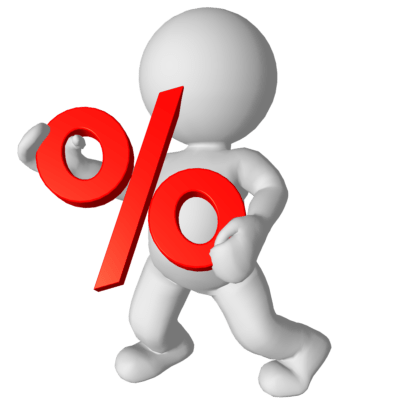Dividend Discount Model (DDM) is one of the most widely used valuation models. It can actually be considered as a derivation of the same principles that we use for determining the time value of money. The center piece of the model is based on assuming a discount rate which is then used to calculate the present value. Yet there are many misconceptions surrounding discount rate.
Many students often consider that discount rate will always have to be less than the defined rate of return for an investment. This rate is assumed to be constant for the entire holding period of the investment. However, this is fundamentally not correct. Instead, just like the rate of growth in dividends can vary over a time horizon, so can the rate of return otherwise known as the discount rate. Yes, discount rate is nothing but the rate of return. This is an area that most people get confused. It is the same reason why different investor classes value the same asset differently. For example, an angel, VC and a PE firm will value the same projected cash flows at a different valuation owing to their discount rate variations.

Now let us look that in a multi-period investment from an individual perspective. His return requirements will definitely change depending on the stage of his life. For example an individual will have a different rate of return in his work life and post his retirement. In a similar manner, in a valuation model, the discount rate should vary depending on the stage of the investment as well as the investor.
The other important factor is the risk involved. The higher the risk, the higher the discount rate. The discount rate should also take into account factors such as inflation. This will provide clarity if an investment is actually generating any real return or not for the investor. The real challenge however lies in determining the same. There are several models that can be used for calculating the rate of return such as CAPM or multi-factor models such as Fama French Model. The higher the number of factors, the higher the probability of accuracy as long as the factors are not corelated with each other.
One thing that everyone should remember though is, discount rates are based on assumptions and hence subjective. There is no clear formula that defines it with complete accuracy. A risky asset may be valued at a lower discount rate thus overvaluing the same and the vice versa is equally possible. The critical factor therefore is to understand the underlying factors impacting the asset before arriving at a discount rate. Valuation, after all, is art and not science.
Tags: discount model valuationYou might like reading:

10 Amazing Branding Campaigns Of Pepsi Cola
Pepsi Cola is undoubtedly one of the most popular aerated beverages in the world. The drink was invented in the year 1893 by pharmacist Calhem Bradham as a digestive aid. The brand that we see has a long history during which it transformed itself as a popular consumer product and part of a global food and beverages empire. Here are […]
Panel discussion on Union Budget at first ever XIMB-XUB Budget Conclave
X-Fin, the finance association of XIMB-XUB, in collaboration with the World Trade Centre, Bhubaneswar,organized on Wednesday, 2nd March 2016, for the first time, a panel discussion designed to analyze the ‘Implications of the Union Budget 2016-17 on Direct and Indirect Taxation’. World Trade Centre (WTC) Bhubaneswar, which is a member of the World Trade Centres Association (WTCA) New York is […]






























